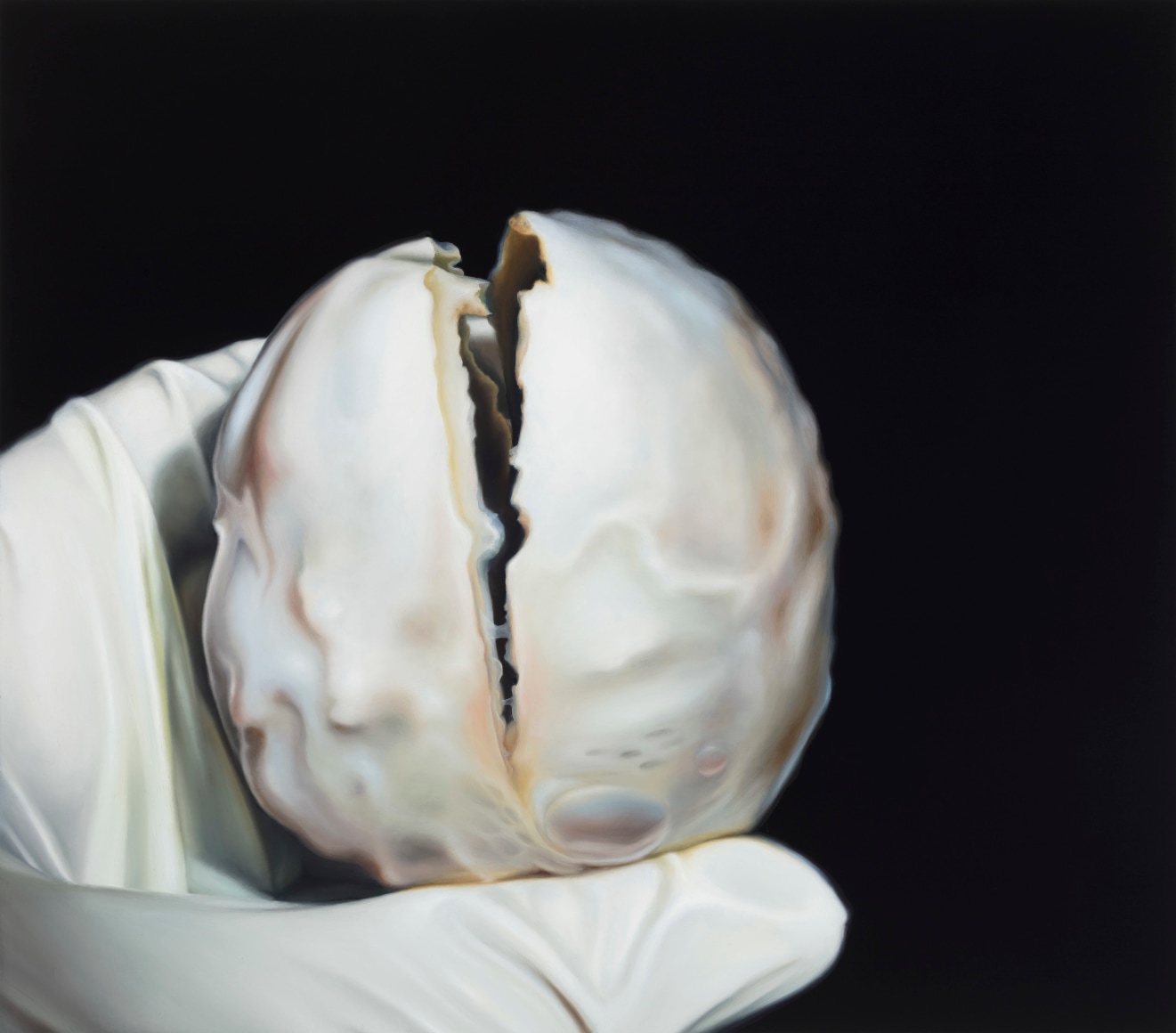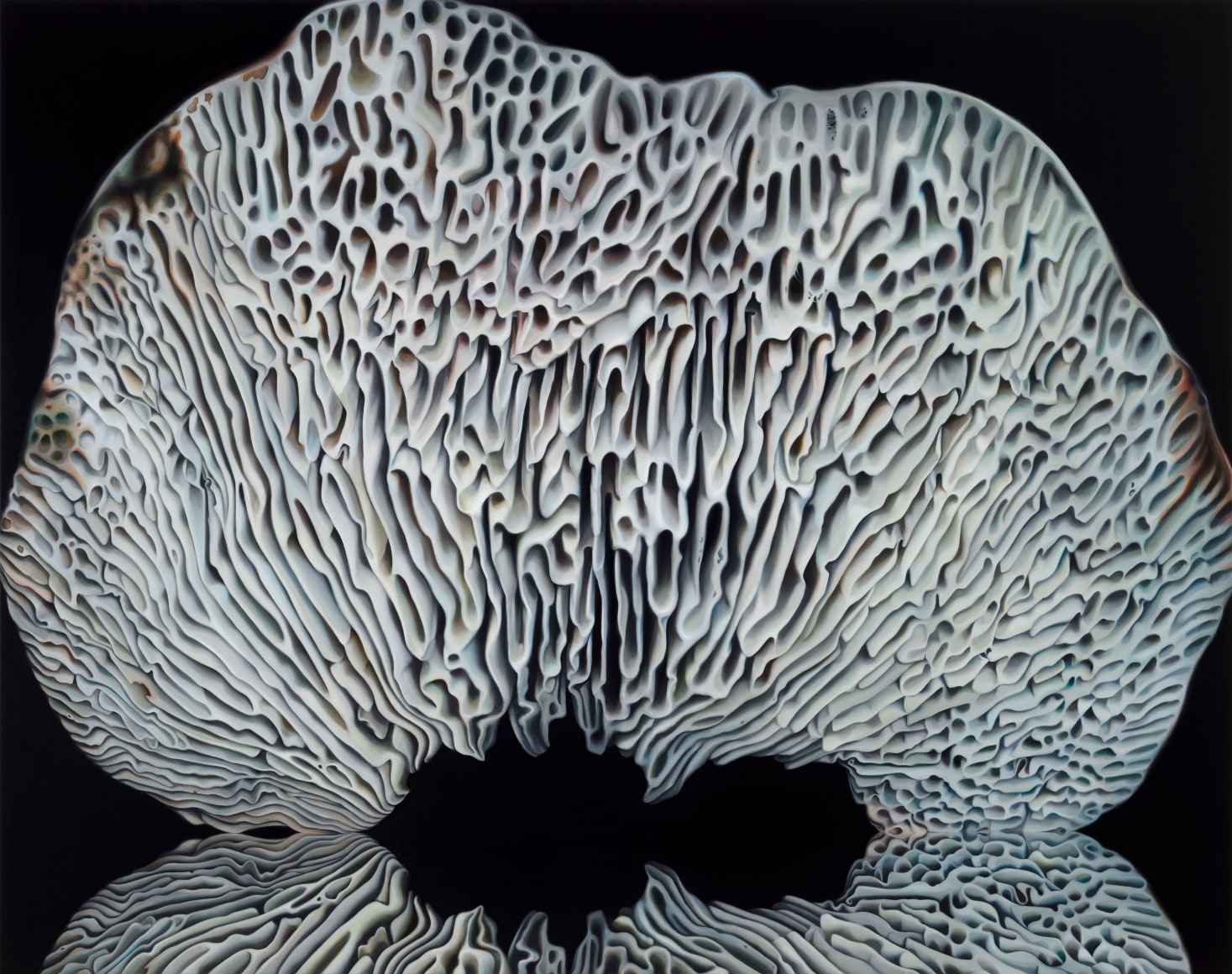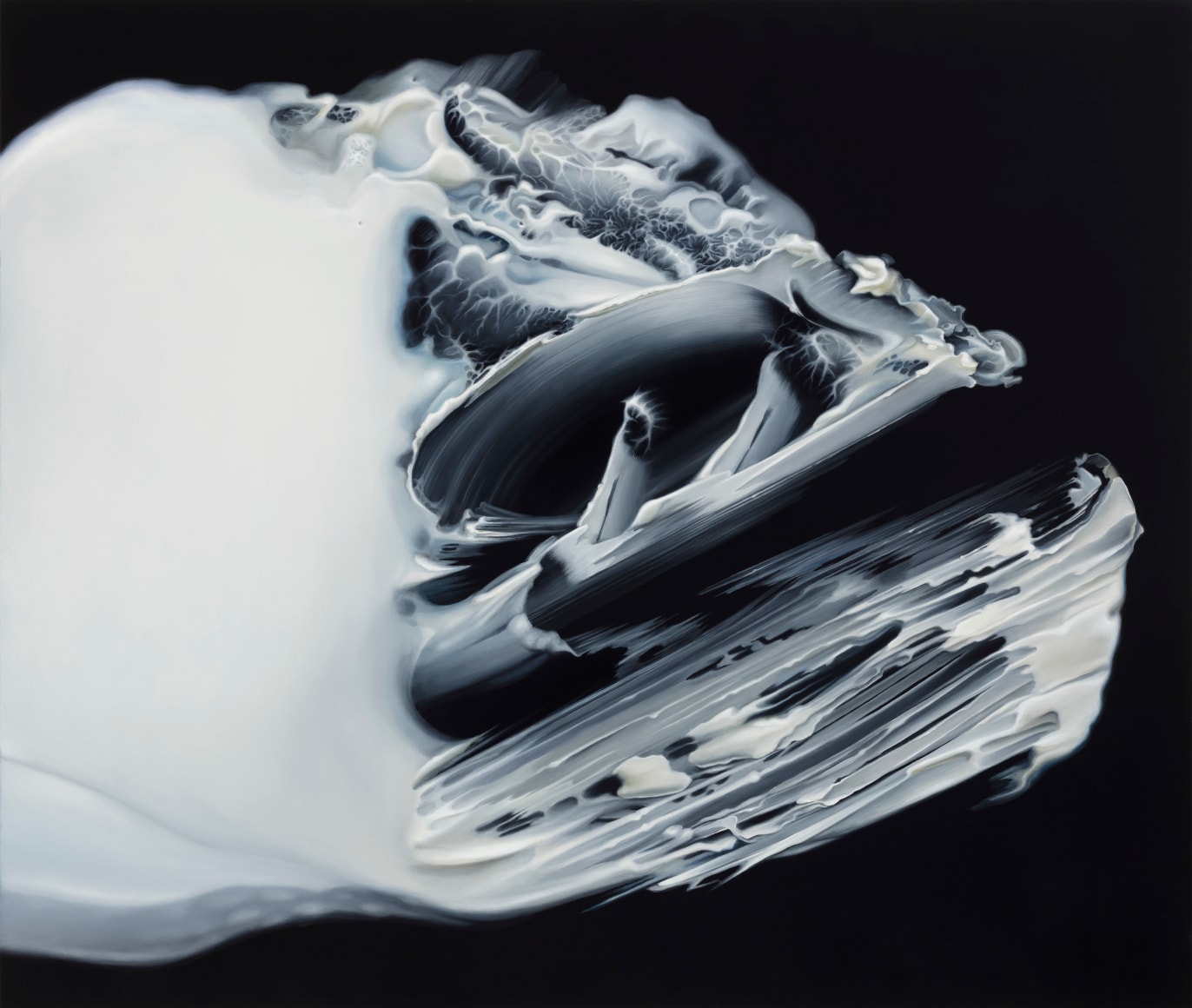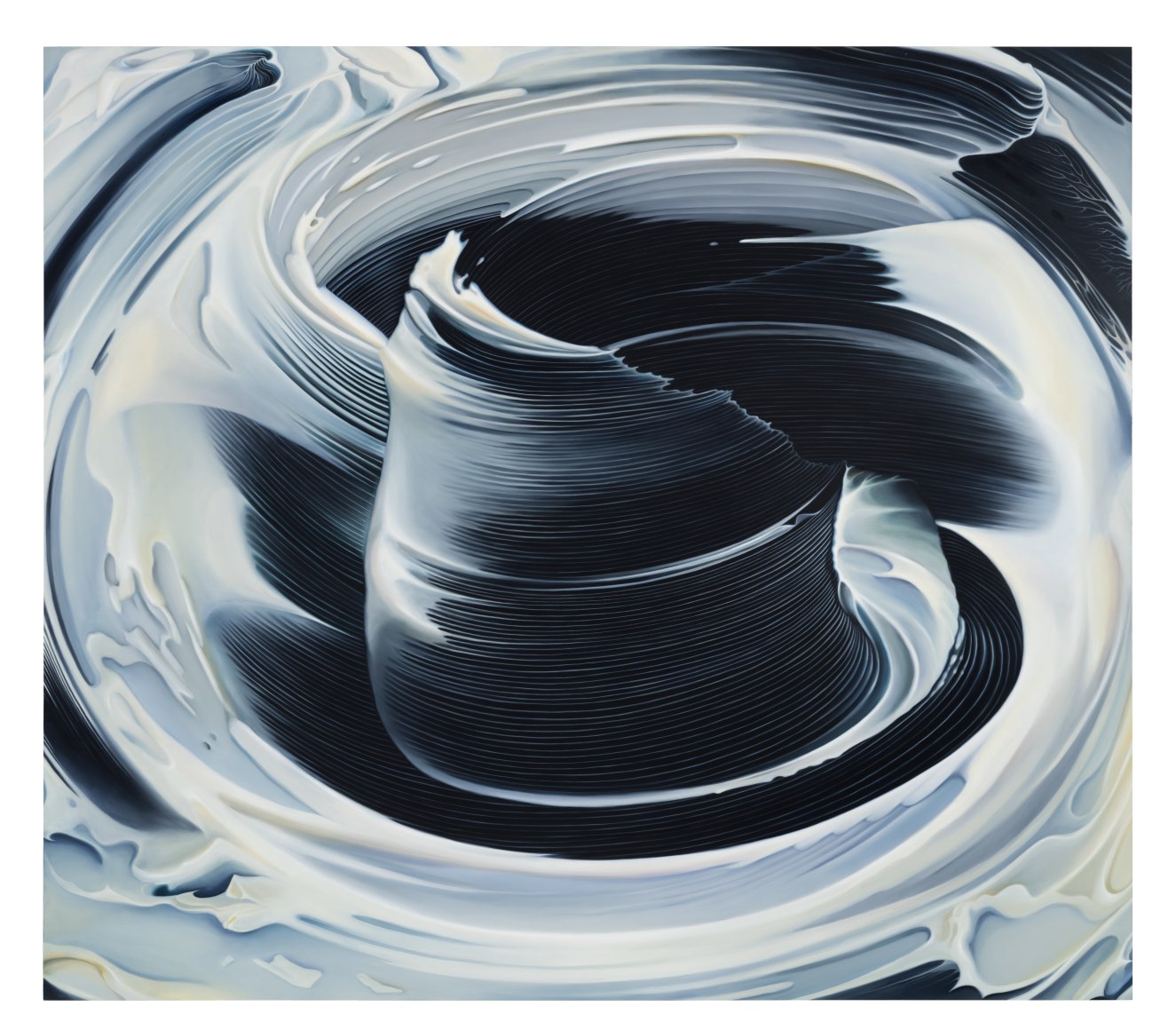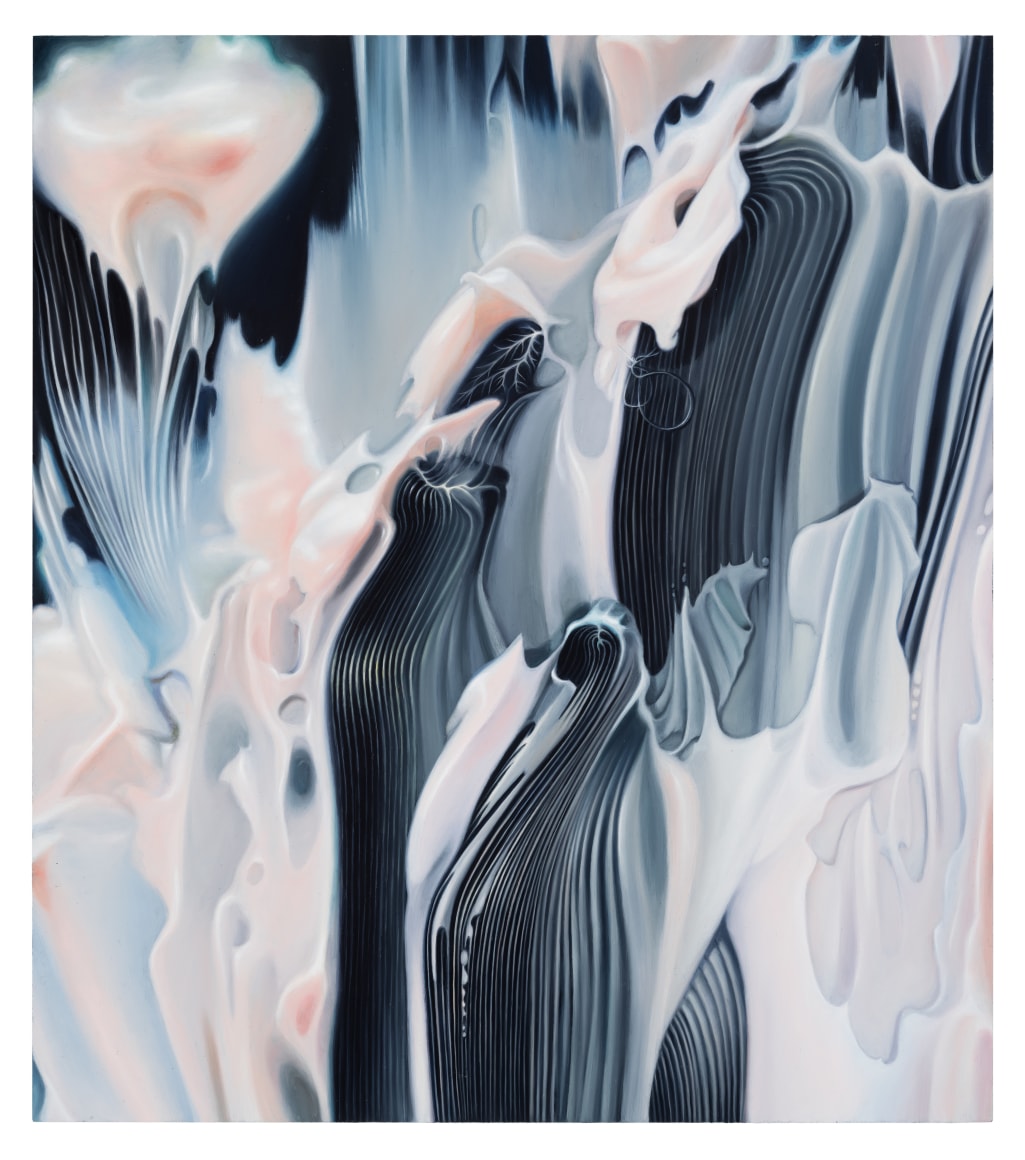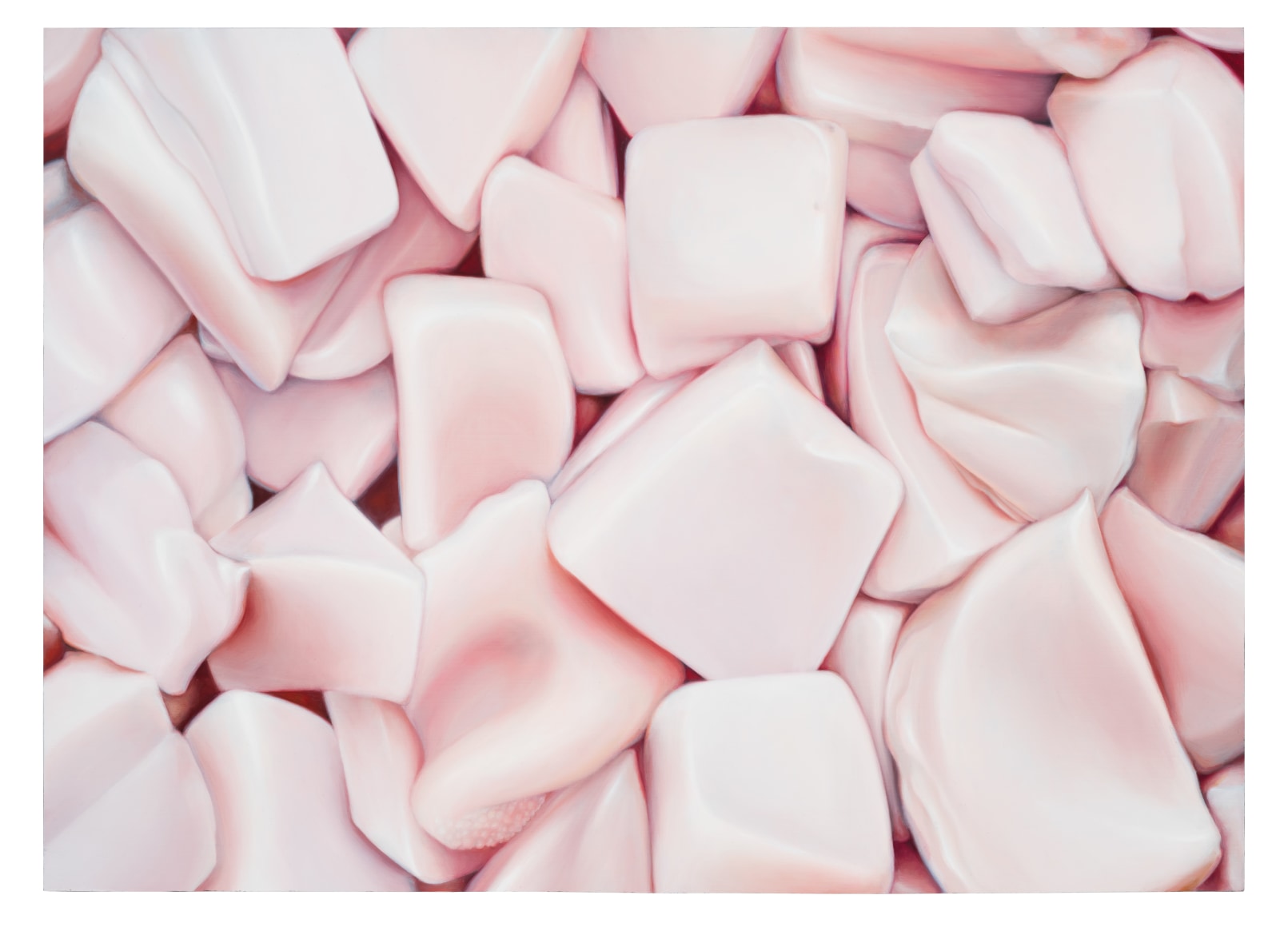Anna Camner: A Plague I call A Heartbeat
Galerie Forsblom Stockholm
October 4–November 10, 2019
Opening in the presence of the artist, October 3, at 5–7pm
Slowly Poisoned
Anna Camner’s paintings invite reflective contemplation – like the picture of ghostly, pearlescent and transparent silk fabric; or perhaps it is a plastic sheet, nearly luminous on a black background. Upon closer inspection, this beautiful material, rendered with such rich detail, proves to be splashes of mildew, fingerprints, and other less discernible stains. The sheet is also tattered and torn at the edges. In its pleated surface, it is easy to see shapes that spark associations with the human body, perhaps the sex organs in particular, but other things as well. These similarities are not obvious and viewers may easily wonder whether their imaginations have run away with them. Georgia O’Keeffe resolutely denied that her paintings of flowers were intended as metaphorical depictions of genitals and female sexuality. But once hidden figures begin to appear, it is difficult not to see them. Instead, with burgeoning paranoia, suspicions arise that what seems to be a realistic depiction hides something else, something darker. And given how time-consuming and exquisitely detailed Camner’s paintings are, it is difficult to believe that the artist has not intentionally created these ambiguities and potential readings.
The paintings focus on relatively limited details, and the lack of overview or explanatory narrative lends to the mysterious atmosphere hovering over them. They are precise close-up studies of materials, textures and surfaces, and yet the viewer cannot easily determine just what these materials are. We are also frequently suspended in our uncertainty about whether these materials are natural, organic – like plant cells or coral – or fabricated, and whether they are alive or dead. Ultimately, the lines in between are blurred, which is especially clear in the works that seem to depict some kind of process of decay, where a life or state of being transitions into something else. Small bubbles in a liquid are evidence of fermentation, dissolution. Other paintings appear to have a yellowish white, waxy material that has dried, hardened and cracked in some places. The properties of the material are studied: different states of matter, transformations and reactions. A similar material has been sliced in another painting, and sharply cut blocks are stacked atop one another. Human interference is contrasted against the more organic shapes of the material here.
Anna Camner’s work has been described as resembling contemporary vanitas paintings. And to be sure, one can discern many references to art history, such as Dutch Renaissance and Baroque painting, or Surrealism. But that does not diminish the singular remarkability of the paintings. Bearing in mind media warning reports of a natural world that is sick and poisoned, contemporary reality creeps into these fantastical worlds, which may seem alien. With technical brilliance, Camner uses the possibilities of painting to create pictures that could hardly be achieved with a camera. Camner’s works are time-consuming – both to create and to behold. In this era of fast consumption and simplified messaging, they invite much-needed reflection.
Magnus af Petersens

